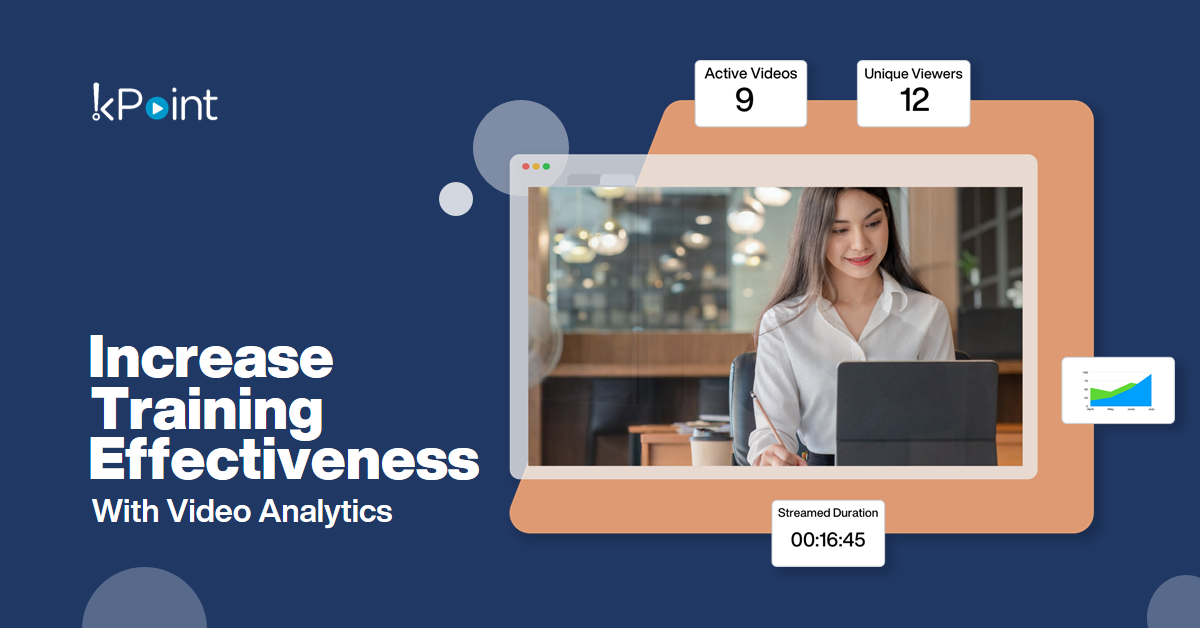
In 2021, you can’t afford to ignore the importance of measuring training effectiveness. The majority of L&D professionals (64%) agree that learning has shifted to a “need to have” priority from being a “nice to have” in the previous year. Regular and accurate measurement makes sure that you derive value from your investments and employees actually engage with the learning content. A central aspect of this conversation is video analytics – particularly given that we now live in the age of video.
What is Video Analytics
…and what does it have to do with training effectiveness?
Video analytics is defined as the process of monitoring user behavior before, during, and after the video to arrive at insightful data points. In the context of learning and development, video analytics can tell you how many learners have seen the video, how many have dropped off mid-way, where did they get to know about the video, if they shared their learnings, and much more.
You can pinpoint your top-performing learning assets to inform your future L&D roadmap.
This is all the more necessary in the current age of video, fueled by:
- The rise of video-native generations
- Democratized access due to affordable internet
- Advancements in video technology, such as integration with LMS
Did you know that millennials (anyone born after 1981) are 2.7 times more likely to learn a new skill from a video than a book? Corporate giants like Vodafone and Avon are investing heavily in video-based learning, and 45% of millennial viewers have been inspired to make a personal life change after watching a video.
Let these numbers sink in for a minute. This means that if you aren’t measuring video analytics, you are missing out on a piece of the training effectiveness puzzle, which could help you radically improve L&D outcomes over time.
6 Video Analytics Metrics You Need to Measure
Here are the top video KPIs that will inform you about learner engagement and the impact of video content on the workforce:
- Cumulative views for videos – How many total views has a particular asset racked up over time? How many of these are unique views? By measuring this metric, you can assess the penetration level of learning video content across your employee base and plan how to increase reach.
- In-video behavior – Are employees pausing in specific places, navigating away from the video, or showing any other behavioral patterns while watching the video? This can help identify the most and least engaging parts of a learning experience, and where employees might be facing bottlenecks.
- Interactions with annotations – If you have populated the video with annotations such as text labels and hyperlinks, it is useful to monitor how they interact with these in-video elements. For instance, if employees tend to click on an embedded hyperlink to learn more about a specific topic, you can apply the same strategy for similar topics as well.
- Video completion rate – This is an essential metric that tells you about training effectiveness. Low completion rates are a red flag, and you might need to adopt strategies like micro-learning to grab and retain learner attention for the full video duration.
- Social engagement – If you have enabled social activity such as likes, shares, comments, etc. on your learning content, it is vital to measure if employees are using these features. Research suggests that a social learning environment can dramatically improve your overall training effectiveness.
- Knowledge retention over time – After video deployment and consumption, check on knowledge retention using short tests or quizzes at 7-, 30-, and 60-day intervals. You can even embed these quizzes in the new videos that you put up, making sure that employees do not suffer from the forgetting curve phenomenon.
Benefits of Monitoring Analytics on Learning Videos
There are several ways L&D professionals like you can benefit from learning video analytics.
In the short term, you’ll know which type of content is making the most impact and if learners aren’t engaging with a mandatory or necessary video-based course. Over time, you can use insights like viewer demographic and points of engagement/disengagement to finetune the video. Therefore, employees gain from a better learning experience. Video analytics also help to maintain the technical quality and resilience of your learning program. For example, you can analyze the most popular time of day when users log in to ensure there is zero downtime during that period.
Ultimately, training effectiveness improves due to a data-driven approach – in terms of the learning content design, learner engagement tactics, and infrastructure readiness.
Use a Video Management Platform to Get Started Today
While extracting analytics insights from your learning content can seem like a complex backend task, it doesn’t have to be that way. Cutting-edge video management platforms like kPoint provide you with built-in analytics capabilities, with little to no technical effort needed from your side. This allows you to understand every aspect of your learner’s viewing behavior, identify dominant trends and also get real-time reports on video performance. As a result, you can gain from the full 100% potential of your video content at a time when your learners are likely to be squarely video-first.
Comment below with your thoughts and contact us to know more about the power of video analytics for gauging and increasing training effectiveness.

